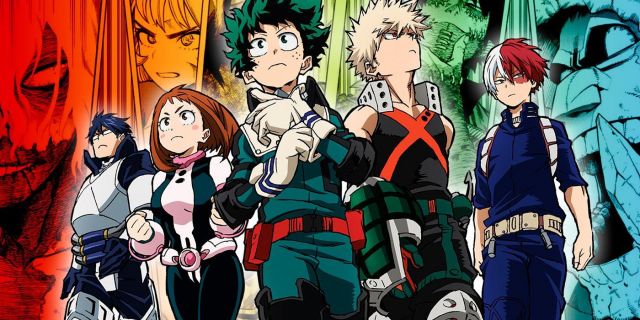The following contains major spoilers for My Hero Academia Chapter 374, “Butterfly Effect” by Horikoshi Kohei, Caleb Cook and John Hunt, available now in English from Viz Media.
In-universe, My Hero Academia’s Quirk Singularity Theory is considered fringe thinking and inappropriate for civil conversation. Despite this, the series has provided several hints that the “prophecy of doom” might actually contain some truth to it.
In the midst of the final all-out war between the Pro Heroes and villains, several characters have let their Quirks run wild, showing a level of power far above what has come to be expected of Quirks.
How Did Mezo Shoji Prove My Hero Academia’s Quirk Singularity Theory?

Originally proposed by Dr. Kyudai Garaki, All For One’s most trusted advisor, the Quirk Singularity Theory was originally dismissed as ludicrous thought. Dr. Garaki proposed that Quirks would one day become too complex and powerful to control, outstripping those of previous generations with ease in strength. He attributed this sharp growth in strength to the intermingling of different Quirk bloodlines, which could lead to mutations like young Eri’s Rewind Quirk.
One youngster who might already be living proof of this controversial theory is Mezo Shoji. Despite Spinner being gifted two powerful Quirks from All For One, Shoji’s Dupli-Arms Quirk refused to be overwhelmed by his brute force. In fact, the reason his message of peace resonated so much with the other heteromorphs was that his bout with Spinner proved he had the power to oppose them with force. Instead, he spoke to them as kin and implored the heteromorphs to examine the future implications of their current actions. Even while facing a combination of three older-generation Quirks, Shoji more than held his own. If Spinner had stayed and fought him, who knows if Kurogiri might have ever been freed.
While observing Shoji’s battle with Spinner, Present Mic made a very astute observation. He spared a thought for his old friend group, the three Dumbingos made up of himself, Eraserhead and Oboro Shirakumo. Comparing their strength at the same age to that of Shoji’s and the recently awakened Koji Koda, he realized that their students outmatched them by a fair amount. In just one generation, the differences were already being made apparent.
How the Todoroki Family Proves MHA’s Quirk Singularity Theory

The fierceness of the Todoroki family’s internal conflict is perhaps only rivaled by the intense heat their shared Flame Quirks are capable of. As Endeavor, Dabi and Shoto push their Quirks to the limit in a battle for their lives, MHA’s entire world bears witness to the culmination of the hellish Todoroki family’s joint character arc; Shoto and Dabi settling the one-sided feud that was years in the making, and Endeavor facing off against All For One himself.
The massive heat spikes their battling caused have been enough to influence weather patterns over all Japan, but that’s not all. News reports in the United States mention a possibility of the cumulonimbus storm system — spawned by the family’s intense heat over Japan — continuing to grow and influencing the weather in Washington DC.
Three individual Quirks becoming capable of influencing global weather phenomena is certainly indicative of their growing power and potential. Dabi’s Cremation Quirk already burns at a temperature too high for his body to bear. If given the opportunity to develop for another generation or two, MHA fans can only imagine the catastrophic state it might end up in.















Leave a Reply